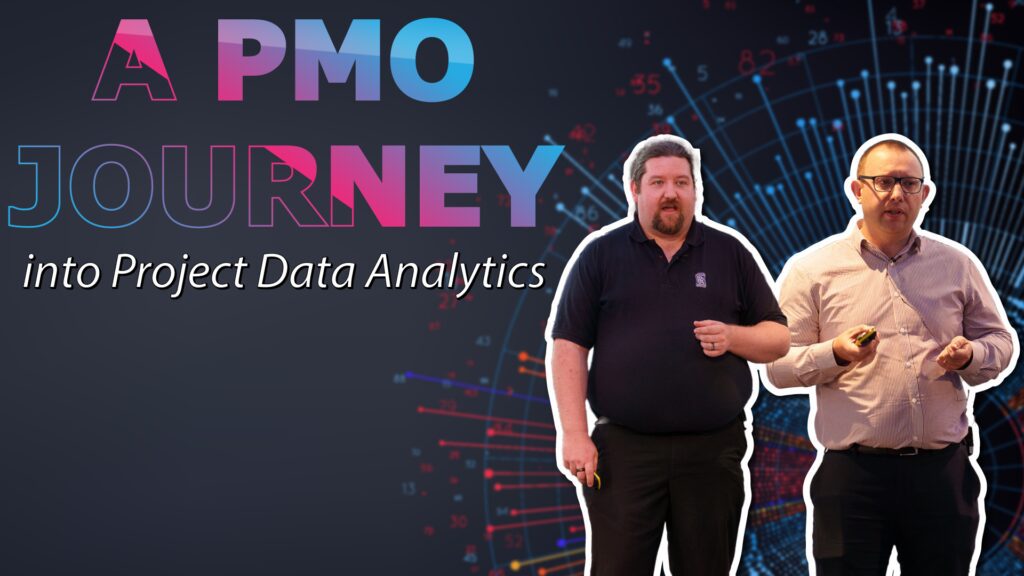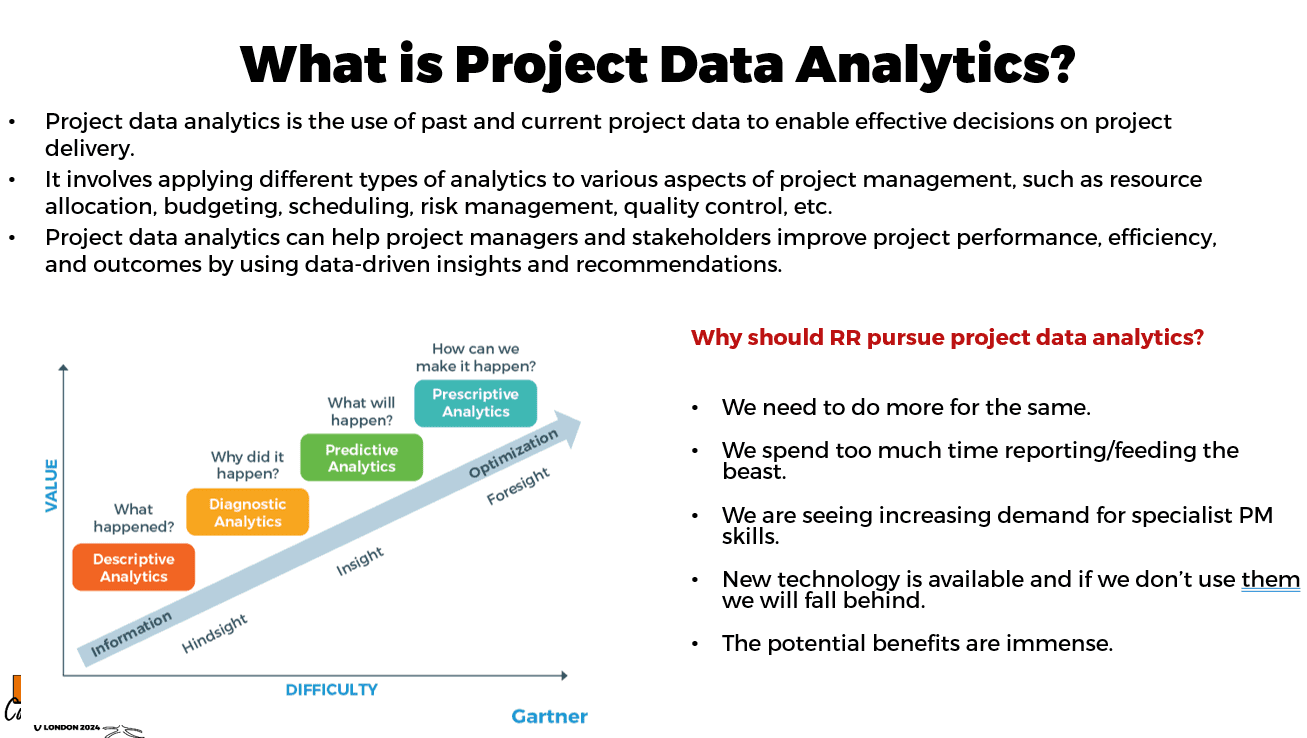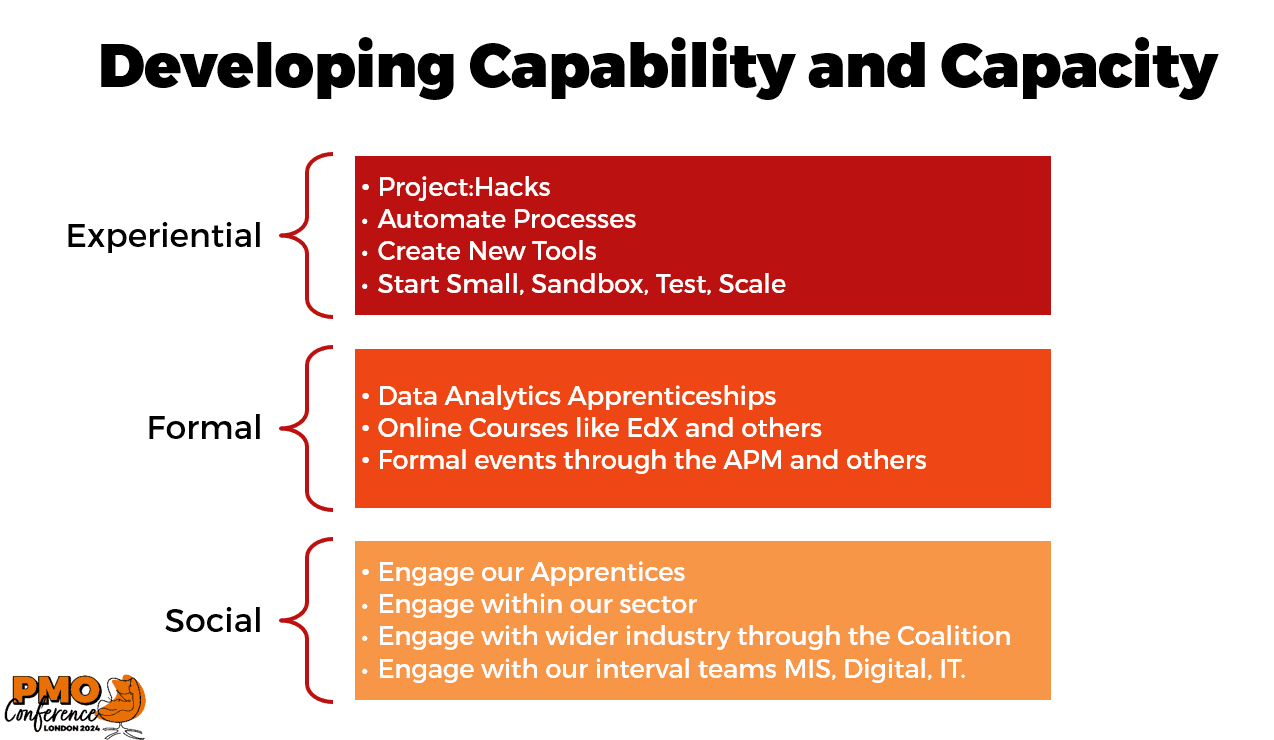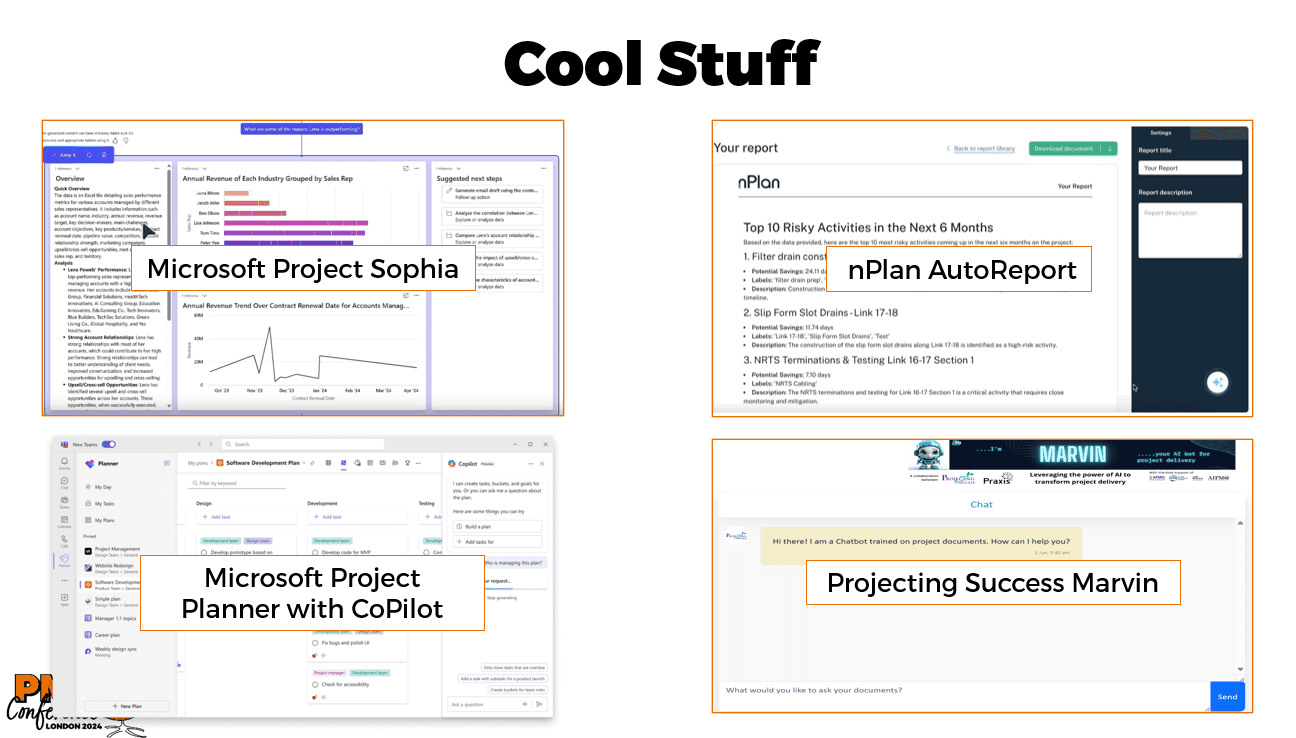Watch back all our PMO Conference sessions
Introducing Project Data Analytics in a PMO / Rolls Royce
 In this enlightening session, David Belshaw and Craig Bennett delve into the transformative journey of the Rolls Royce PMO. Together, they share their experiences and insights on how the PMO has integrated project data analytics to enhance its project management capabilities and drive better outcomes.
In this enlightening session, David Belshaw and Craig Bennett delve into the transformative journey of the Rolls Royce PMO. Together, they share their experiences and insights on how the PMO has integrated project data analytics to enhance its project management capabilities and drive better outcomes.
We learn how the team identified the gaps and challenges in their current practices, and how they are developing capability among staff. The session focuses on the initial steps to take to start using project data analytics in your PMO.
Discover firsthand how the PMO has harnessed the power of digital artifacts and streamlined workflows to optimise their utilisation of project data, leading to tangible enhancements in their processes. They also unveil the strategic roadmap and visionary outlook for further advancements and innovations within the PMO, leveraging the potential of project data analytics to its fullest extent.
Session Recording
Presentation Deck
Download the Presentation DeckSession Insights
Graham Gunn, PMO Conference Reporter gives us his insights from the session:
 This was an inspiring presentation on how a PMO at Rolls Royce applied project data analytics methodologies and tools to digitise, automate and speed-up the process of project change request approvals. It was their first significant attempt at learning how to use these approaches (apart from a proof-of-concept test to organise the food for the Christmas party!), and resulted in the majority of approvals being completed in a few days or even a few minutes, rather than the many weeks required using the old paper-based process. How’s that for a leap in productivity?
This was an inspiring presentation on how a PMO at Rolls Royce applied project data analytics methodologies and tools to digitise, automate and speed-up the process of project change request approvals. It was their first significant attempt at learning how to use these approaches (apart from a proof-of-concept test to organise the food for the Christmas party!), and resulted in the majority of approvals being completed in a few days or even a few minutes, rather than the many weeks required using the old paper-based process. How’s that for a leap in productivity?
This example only applied to the basic workflow of initiating, formatting, and distributing a change request and then subsequently retrieving responses from the affected work package managers. It also allowed automated change status notifications and change impact reporting. In the future, more complicated aspects of the overall change request process are anticipated, linking it up to higher-level business management functions.
The session began with a description of what Project Data Analytics (PDA) is, its various levels of complexity and some of the many benefits it can provide to the project management process.
This was followed by an overview of various off-the-shelf, user-friendly software tools for compiling PDA solutions, including the use of some AI tools.
The real work of building a PDA solution began with mapping out an effective change request/control process. Previously, each project used its own custom process, so step 1 was to standardise on the APM model. Based on this, a detailed workflow plan was developed, along with the corresponding digital forms that carried the data around the network. This was then encoded in automated workflow management software that used “drag and drop” software blocks representing process logic, data logging, messaging functions, etc.
Another very interesting aspect of the presentation was the approach taken to expand and develop PDA skills within the organisation. The scheme involved: a) practical sessions – i.e. actually playing around with ideas and experiments; b) education, including an apprenticeship that anyone can join; and c) interaction with other groups working on PDA, both inside Rolls Royce and in other companies or even other sectors.
They pointed out that the apprenticeship was not a “training course”, but “a vehicle to re-imagine project delivery”. Nice! In fact, they said that once you start thinking in this way, you can never go back to how you operated before.
In the last section of the talk David and Craig laid out some of their perspectives and visions about future PDA/AI developments, including potential evolution in the tricky business of risk management. They suggested that a PMO not utilising lots of PDA would simply become an admin. function rather than a critical project delivery operation.
The last slides left us with a good selection of resources with which to continue our own research into the subject.
After the presentation, the message that stuck in my mind was to just have a go at creating some simple PDA application(s). It ain’t that scary (apparently).





